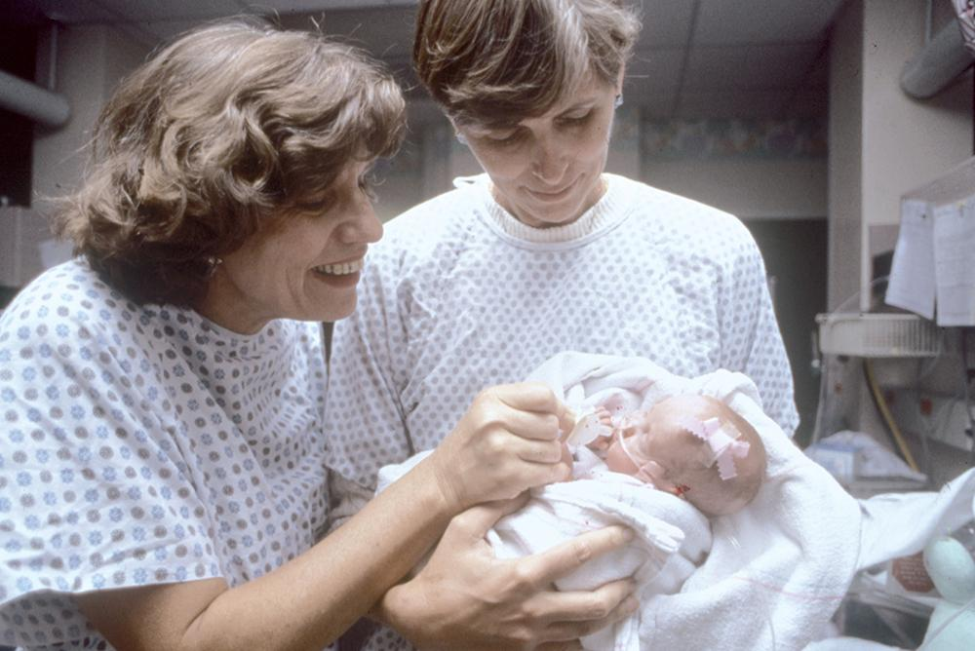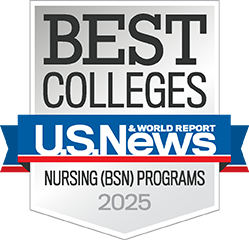1990s
Great Ideas Welcome


UTHealth Houston School of Nursing was an exciting place to be in the 1990s. A passionate group of faculty and staff fearlessly explored new ideas while growing the school in reputation and enrollment.
The school added academic programs, opened a groundbreaking nurse-led clinic, gained the support of a fundraising group devoted solely to its success, and helped other nursing schools establish graduate education.
“It went from a small, clinically focused nursing school that was very well acknowledged within the state to one that developed a more national reputation,” said retired professor Sharon Ostwald, PhD, RN. “Dean (Patricia L.) Starck was always an innovator.”
“There was a lot of support for innovations and creativity,” agreed Professor Diane Wardell, PhD, WHNP-BC. “If you could make it work, you could go for it!”
Wardell and Professor Emerita Joan Engebretson, DrPH, AHN-BC, RN, FAAN, became close friends and collaborators on a number of innovative projects, including development of the patented “Wee Thumbie” pacifier for low-birthweight babies.
Another groundbreaking milestone in the ’90s was the creation of the state’s first dual master’s degree in nursing and public health, established by Professor Emerita Deanna Grimes, DrPH, RN, FAAN. She had joined the nursing school’s faculty in 1977, five years after moving to Houston with her husband, Richard Grimes, PhD, who took a position with UTHealth School of Public Health. The couple helped establish abiding links between the two schools located just across Grant Fay Park from each other. Their collaborations throughout the years included early AIDS research.
“I was teaching a night course for practicing nurses, and some of them started talking to me about weird conditions – skin lesions, infections that wouldn’t heal,” Grimes recalls. Her husband later received a Health Resources and Services Administration grant, and Grimes served as a co-investigator to support nursing education about HIV/AIDS.
The school’s crowning achievement in the ’90s was the establishment of its first doctoral program. Preparations started earlier, with Starck strongly encouraging most faculty members to earn doctorates. Since doctoral programs in nursing still were not terribly common at that time, some opted to earn terminal degrees in education, public health, or other related fields.
“To be on par with other university faculty, you need that doctoral preparation,” Starck said.
Professor Emerita Janet C. Meininger, PhD, RN, FAAN, led the development of the school’s first doctoral program, then a Doctor of Science in Nursing (DSN) degree. The proposal enjoyed strong support from The University of Texas System but struck out on its first at-bat with the Texas Higher Education Coordinating Board in the 1980s. The second attempt succeeded in 1996, with UT System Chancellor Bill Cunningham, PhD, personally championing the cause. Lorraine Frazier, PhD, RN, FAAN, who would one day become dean of Cizik School of Nursing, supported the program’s development and completed her MSN just in time to join one of the first classes of doctoral students.
Because strengthening the school’s research resources went hand-in-hand with doctoral education, Professor Sandra K. Hanneman, PhD, RN, FAAN, came on board in 1996 as associate dean for research and evaluation. Planning was underway for the building that would become the school of nursing’s new home nearly a decade later, and Hanneman advocated for incorporating laboratory space into the design. She also reorganized the Center for Nursing Research to provide robust support for students and faculty seeking grants and writing for publication.
“As your reputation grows for quality and productivity, you are viewed differently,” Hanneman said. “Other schools were approaching us about collaborations, which enhanced our faculty’s opportunities and productivity.”
Before the new millennium arrived, the school would rise to 22nd among nursing schools receiving funding from the NIH, and its highly regarded nurse anesthesia program would be ranked eighth in the nation by U.S. News & World Reports.
1990
- Pediatric Nursing program is jointly established with Texas Woman’s University, becoming solely UTHealth Houston’s program in 2001.
1991
- UT Health Services clinic opens.
1992
- Thirteen students graduate with an MSN degree as part of an outreach program that results in The University of Texas-Pan American (now UT Rio Grande Valley) establishing its own master’s program in 1994.
1994
- PARTNERS is established with Peggy Barnett as its first chair.
- Joan Engebretson, DrPH, RN, and Diane Wardell, PhD, RN, receive a patent for the first pacifier designed for low birth weight babies, branded “Wee Thumbies.”
- Neonatal Nursing Program is established.
1995
- The first dual degree MSN-MPH program in Texas begins in Houston.
1996
- The Doctor of Science in Nursing (DSN) program is founded.
- Acute Care Nursing and Family Nursing programs are established.
1998
- Nurse Anesthesia Program is ranked eighth in the nation by U.S. News & World Report.


